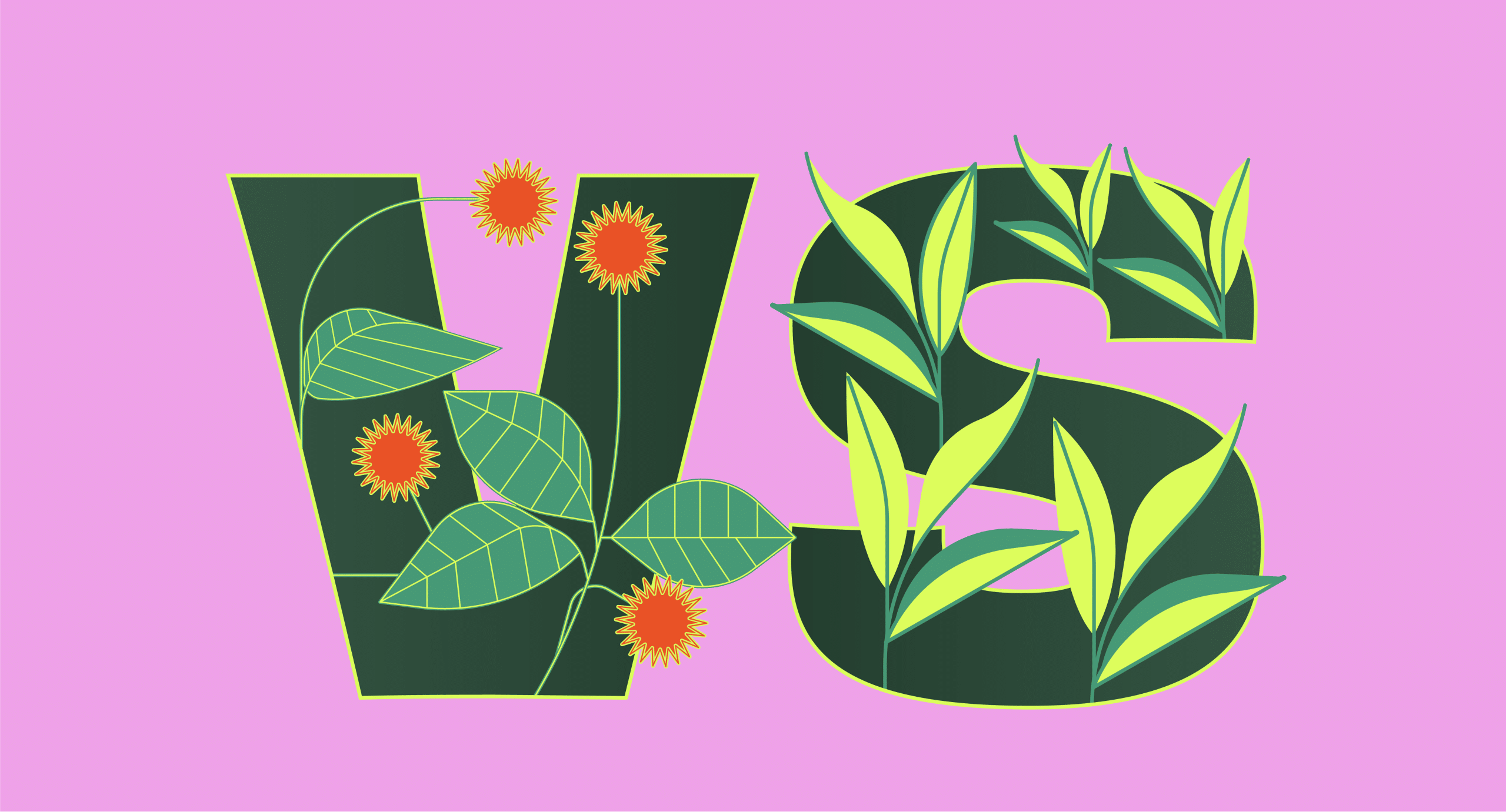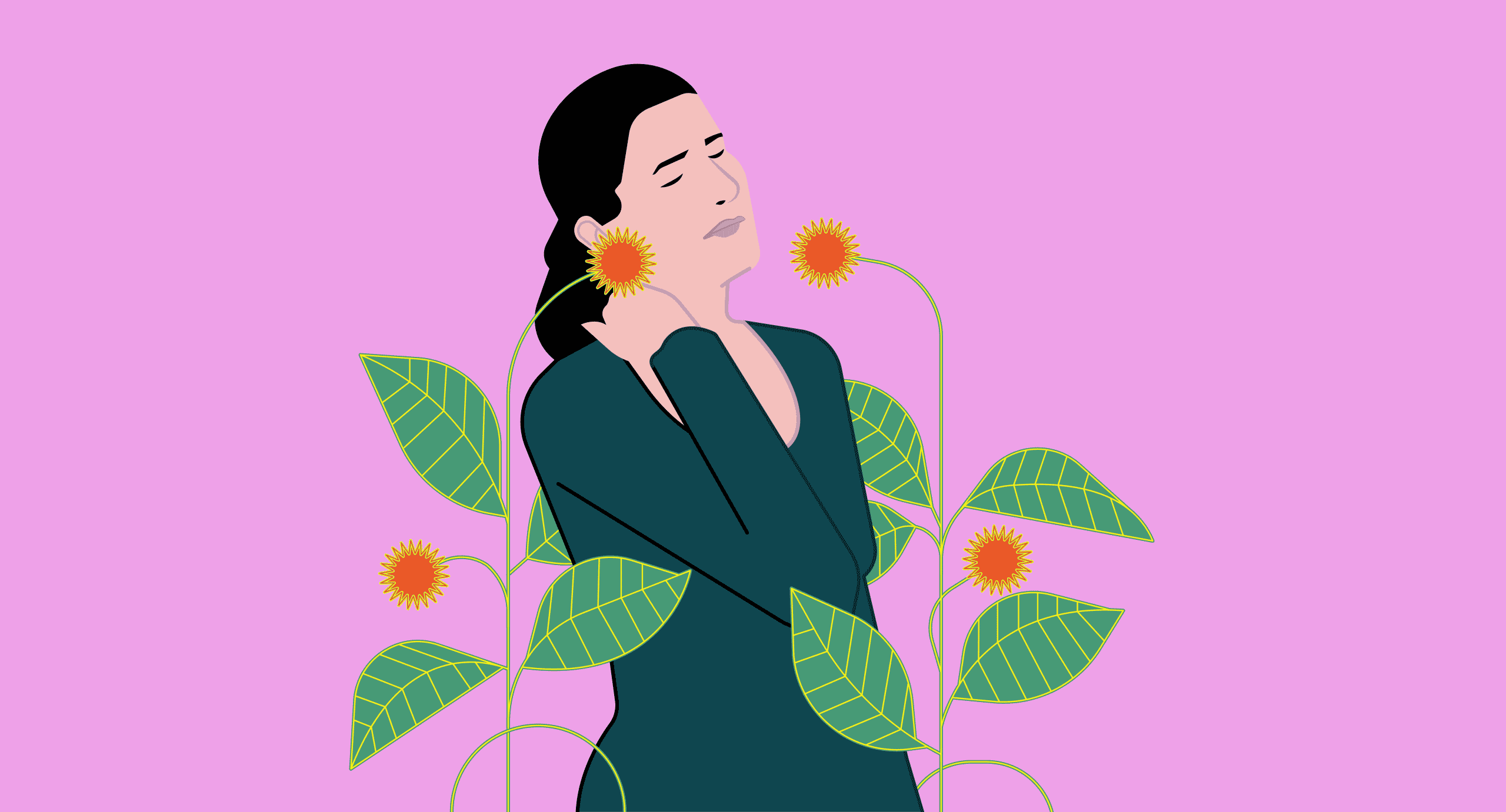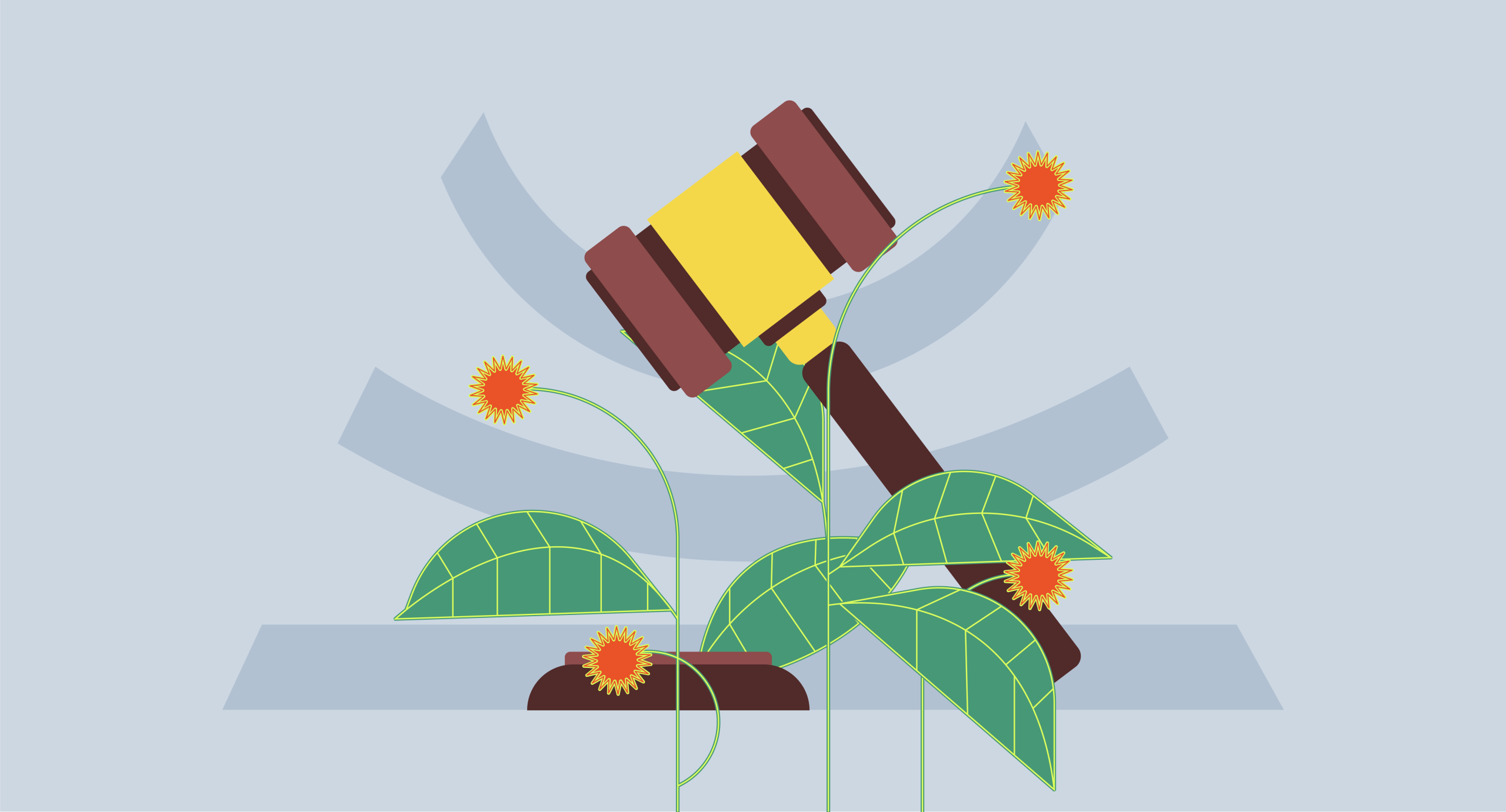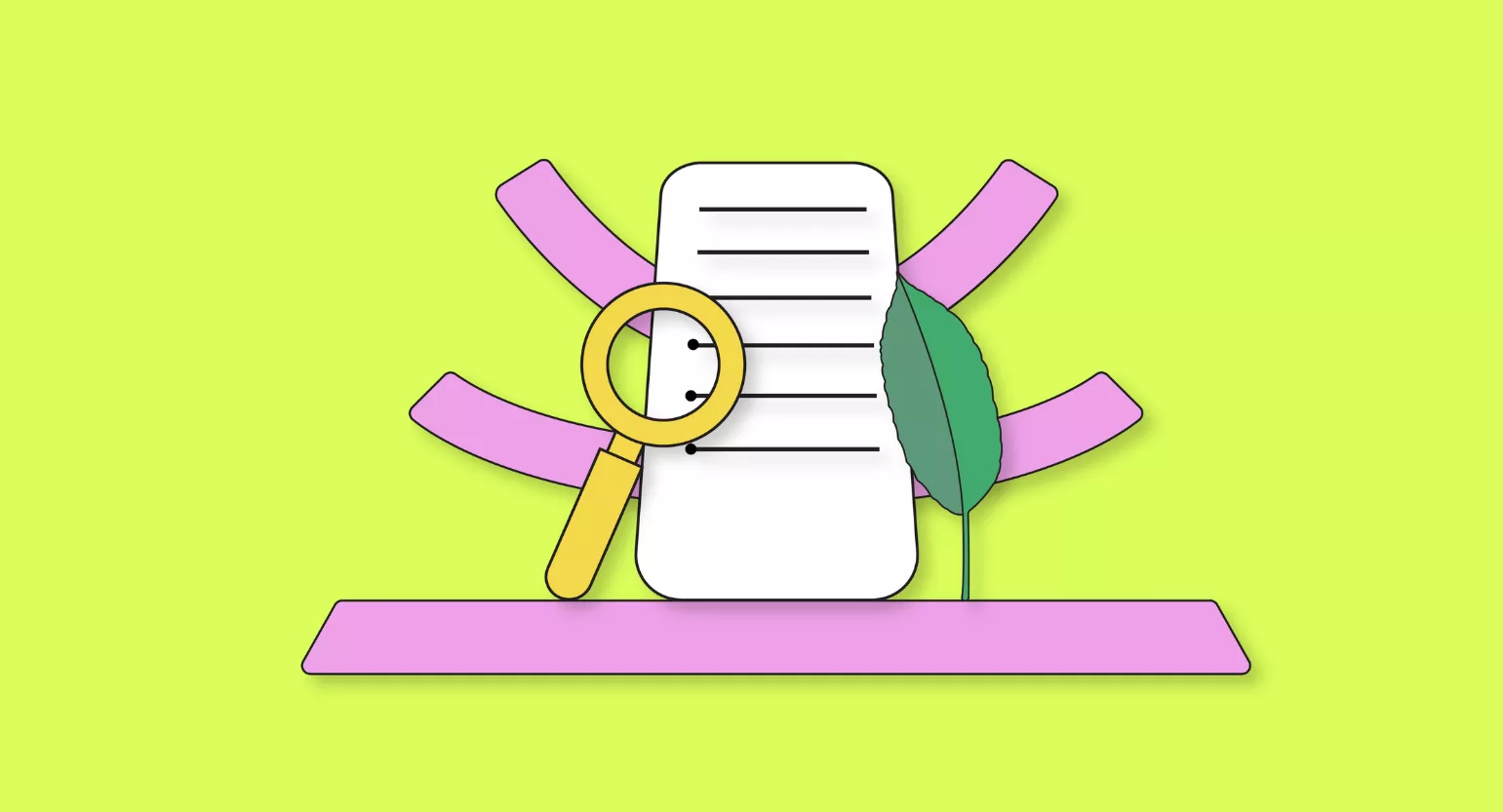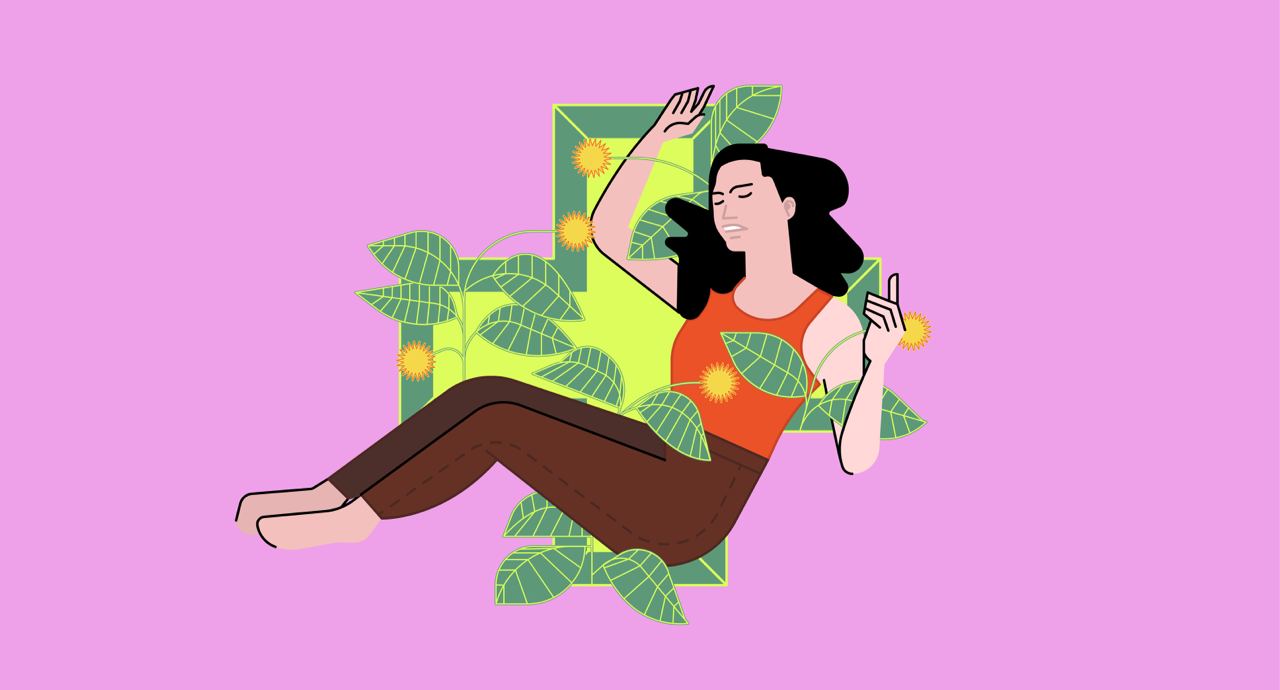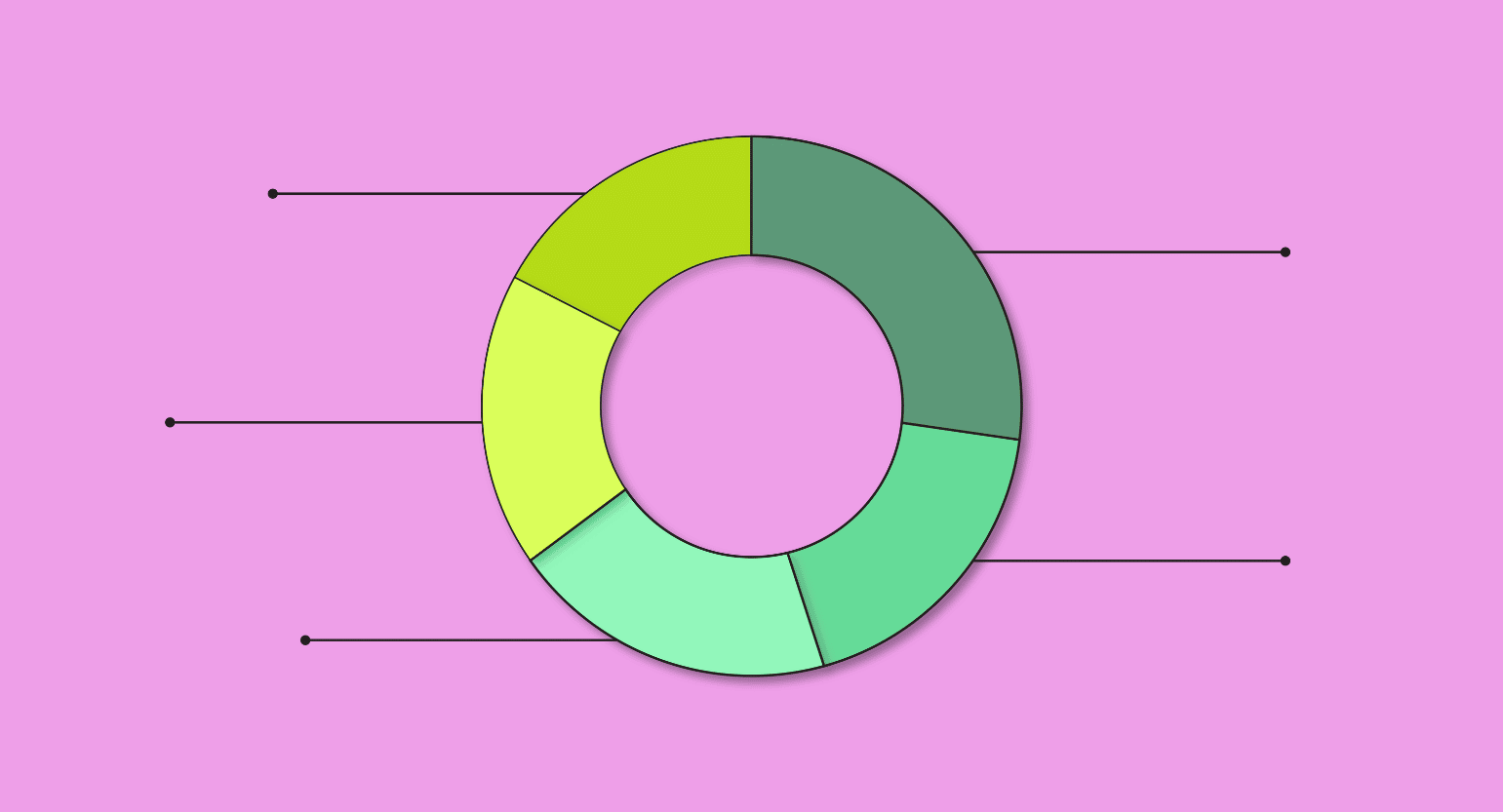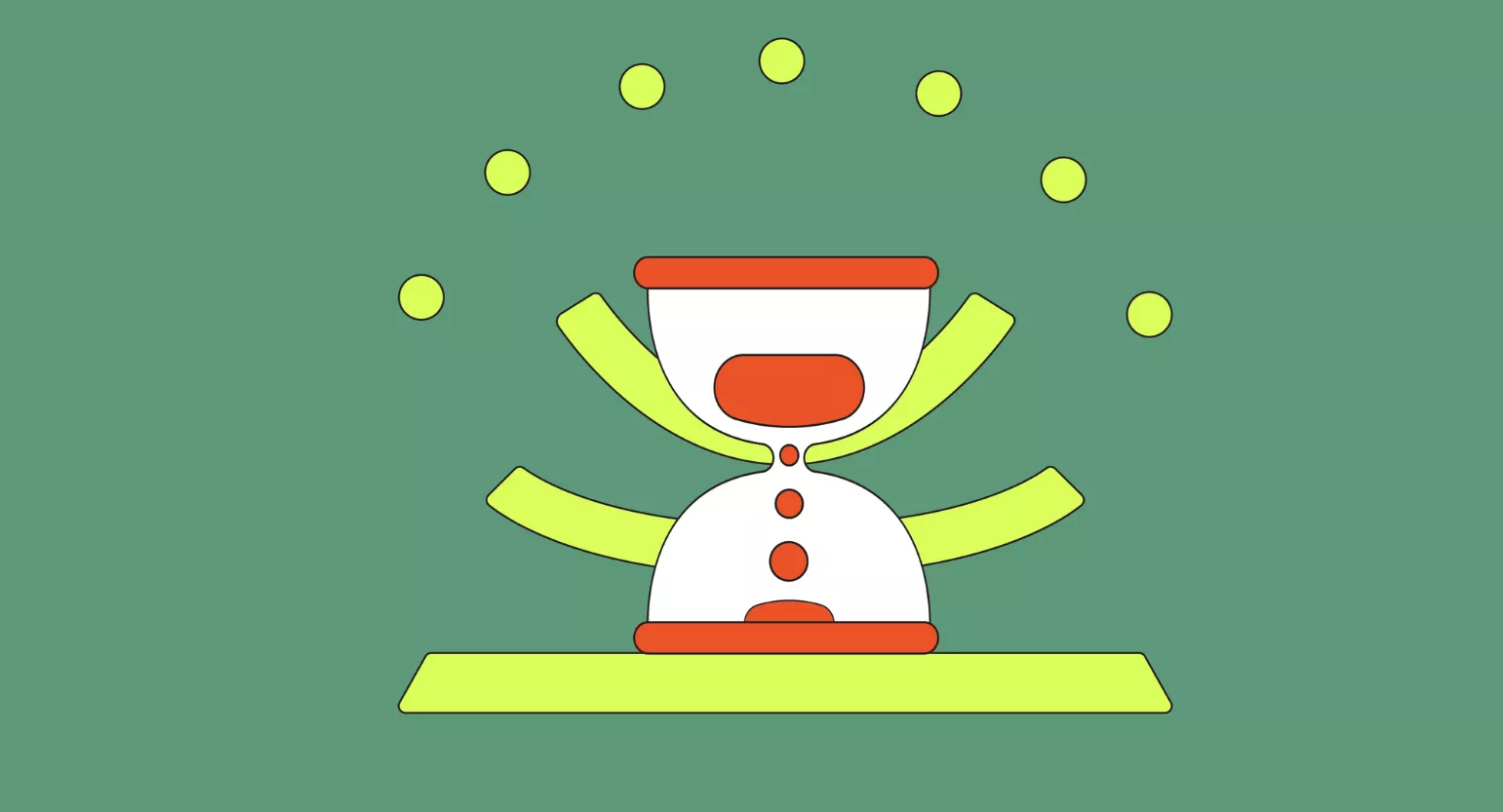Comparison Summary: Matcha vs. Kratom
| Kratom (Mitragyna speciosa) | Matcha (Camellia sinensis) | |
| Appearance | Green powder | Finely ground, bright green powder |
| Benefits & Uses | Varies; used to relieve pain and anxiety; boosts energy and focus or causes sedation | Boosts energy and focus; many long-term health benefits |
| Dose | 2-8 g | One to three 8 oz cups, daily |
| Side Effects | Nausea, constipation, irritability, dry mouth, loss of appetite | Headache, insomnia, heartburn, diarrhea, irritability |
| Cost | $12-$18 per oz | $10-$20 per ounce |
| Origin | Mitragyna speciosa in Southeast Asia | Camellia sinensis in Japan |
| Active Ingredients | Alkaloids mitragynine and 7-hydroxymitragynine | EGCG, polyphenols, theanine, caffeine |
Kratom vs. Matcha: A Side-by-Side Comparison
Comparing these two herbs side by side is a bit difficult because they’re so different. Aside from the fact that they’re both stimulating green powders, they’re not similar at all.
Appearance
Both kratom and matcha grow in the wild, but the majority are now grown on farms. Kratom grows on a tree with thick, broad leaves. Matcha, or green tea, grows on a small shrub.
Both powders are relatively similar in appearance: finely ground and green. Matcha powder is usually ground much finer than kratom and has a much brighter appearance.
Benefits & Uses
Kratom has various uses and is the more potent of the two, though matcha is not without its own medicinal value. Kratom simply has more immediate and apparent benefits.
As a potent painkiller and sedative, kratom rivals prescription pharmaceutical drugs but is a much safer alternative.
Kratom also provides powerful mood-boosting benefits and is a great tool for anyone struggling with mental or emotional issues. It can give people the motivation and strength to make positive changes.
Matcha, and caffeine in general, does act on the dopamine system; however, it’s not as powerful as kratom and is unlikely to cause euphoria. It is, however, a great way to boost your motivation.
Both herbs prove to be useful for focus and motivation. If this is your primary reason for using herbal medicine, matcha might be more helpful. It can provide clean, effective stimulation and focus for several hours and is less habit-forming.
As far as anxiety relief, your best bet is to go with kratom. In rare cases, some people may find matcha reduces their anxiety. However, most people with anxiety find that matcha makes it worse.
The Onset of Effects
One significant difference is the time required for the benefits to kick in.
Aside from stimulation and focus enhancement, most benefits of matcha are not immediately noticeable. Many of these health benefits result from antioxidants found in the tea, which gradually improve health and defend the body against illness.
Kratom, on the other hand, gives most of its benefits immediately. Because of this, kratom is well-suited for situational usage. You can use it long-term but with caution since doing so increases the risk of side effects, tolerance, and addiction.
You can develop a tolerance to matcha as well. Caffeine tolerance is typical for many people, but this doesn’t mean caffeine addiction is safe.
At least in this regard, kratom and matcha are similar. Both can be habit-forming; however, caffeine addiction is less challenging to deal with than kratom addiction, which we’ll discuss more in the next section.
Side Effects
While side effects are minimal for both kratom and matcha, there are a few to watch out for. Discomfort is often reduced or goes away entirely with a lower dose.
Kratom can cause nausea, vomiting, lethargy, dizziness, constipation, brain fog, and anxiety. More severe side effects are reported, such as psychosis, hallucinations, confusion, and allergic reactions, but these are extremely rare. Most users only experience a few kratom side effects, and it’s usually a sign that the dose was too high.
Caffeine is usually the culprit when there are any side effects from using matcha. As with any caffeinated drink, you could experience insomnia, heartburn, diarrhea, irritability, or headaches.
Related: Is Kratom Bad for Your Heart?
Cost
The cost between the two is comparable, running anywhere from $10-$20 an ounce, on average. As with anything, you can spend as little or as much as you want. Not always, but a cheaper product often means lower quality — and when you’re looking for health benefits, you might not want to scrape the bottom of the barrel. Other times, prices are high because of a shady vendor, not because of quality.
Find a good company to buy from and see about buying in bulk; often, you’ll save a lot of money.
Origin
Both plants grow naturally in Asia.
Kratom is a tropical evergreen tree and grows primarily in Thailand, Indonesia, Malaysia, Myanmar, and Papua New Guinea.
Green tea plants are grown worldwide, but the tea used for matcha comes from two regions in Japan: Uji and Nishio.
Active Ingredients
Kratom has over forty alkaloids, but the main two are mitragynine and 7-hydroxymitragynine. These affect the opioid system and explain many of kratom’s benefits.
Matcha contains two amino acids, theophylline, and L-theanine, that provide long-lasting energy boosts; its health benefits come mainly from EGCG, a potent catechin that acts as an antioxidant.
Dosage
Kratom and matcha have entirely different doses. The dose of kratom is anywhere from 1 to 12 times the dose of matcha.
In general, the dose for kratom falls somewhere between 2 and 12 grams of powder. Low doses are energizing; high doses are sedating.
Comparatively, the dose of matcha is between 0.5 and 2 grams of powder. A 1 gram dose of matcha contains about 70 mg of caffeine, similar to a cup of coffee.

Which is Better: Kratom or Matcha?
These herbs are radically different, which makes it difficult to compare which one is better.
For Energy
Winner: Kratom for power, matcha for lack of side effects
The only overlap is their effects on energy. Both herbs act to energize both the mind and body. Kratom is going to be stronger but brings a higher risk of side effects as a result. Matcha isn’t as strong but tends to be a bit gentler on the body.
For Pain
Winner: Kratom
Kratom is a good medicine if you’re struggling with chronic pain or hoping to manage anxiety. It contains compounds that interact with the opioid receptors, which are the primary receptors involved in muting the pain sensation.
Matcha doesn’t contain any direct painkilling compounds and is not effective for managing pain.
For Longevity
Winner: Matcha
Matcha contains potent antioxidant compounds that protect the cells from UV and free-radical damage. It’s heralded as one of the best longevity-enhancing supplements on Earth.
Kratom also contains antioxidants, but they aren’t quite as powerful as matcha’s catechins.
For Anxiety
Winner: Kratom
While matcha does have some relaxing effects through its L-theanine content — it doesn’t even hold a candle to kratom.
In higher doses, kratom is a powerful muscle and nerve relaxant — helping to eliminate the physical manifestation of anxiety. Additionally, its euphoric effects help uplift mood, boost confidence, and eliminate anxiety at its source.
Kratom & Matcha: Addiction & Withdrawal
Kratom is easily identified as the more addictive substance, though whether or not this is objectively true is up for debate. Kratom produces a different kind of addiction than matcha, although whether or not it’s more likely to be habit-forming is uncertain.
What’s certain is that both of these substances can easily lead to a daily habit, build up a tolerance in the body, and lead to withdrawal symptoms when use stops suddenly.
Kratom withdrawal symptoms, though rare, are potentially more debilitating than those associated with matcha usage.
Withdrawal symptoms can be relatively mild. However, people with a more serious addiction may experience chills, fever, nausea, diarrhea, hot flashes, insomnia, muscle aches, and fatigue.
Matcha can cause a degree of withdrawal with symptoms similar to any form of caffeine addiction: fatigue, restlessness, irritability, and anxiety, to name a few. Caffeine withdrawal symptoms are rarely severe enough to cause people to miss work or school.
Can I Use Matcha & Kratom Together?
Many people find that the combination of kratom and matcha is extremely enjoyable and leads to increased social ability, intense motivation, and powerful euphoria.
Both herbs are quite bitter, so adding matcha does little to improve the taste of kratom.
It’s not particularly dangerous if you do choose to combine them. Recreational users often enjoy mixing strong caffeinated drinks with red kratom to offset the overwhelming sedation. However, be aware that the dose is going to be lower for both when using kratom and matcha in combination due to some compounding effects brought on by both herbs.
This leads to concern over whether there’s a strain on the body when balancing contradictory effects. However, there is little science to back this up.
You might want to be especially careful when combining any sort of caffeine with white kratom. White kratom is stimulating, and combining the two can lead to overstimulation and anxiety.
Kratom 101
Kratom is the ground-up leaves of Mitragyna speciosa, a tree common in Southeast Asian countries where it grows naturally. It’s prevalent in Thailand, though it was banned there until recently.
Its popularity has spread worldwide, and people mainly use it for the same purposes it’s been historically used for medicinal and recreational purposes.
Kratom possesses an interesting range of benefits, and some of its effects are seemingly contradictory. For example, it’s renowned as much for its sedative benefits as it is for its stimulating benefits.
Part of this is because of complex interactions with the plant’s alkaloids. Mitragynine and 7-hydroxymitragynine, two main alkaloids found in kratom, act as partial agonists and competitive antagonists of different opioid receptors.
This unique interaction interests the scientific community; both actions have antidepressant effects, but one lacks abuse potential. This combination could prove to be an effective — and safe — treatment for mood disorders.
Any substance that affects the opioid receptors has the potential to be addictive, including kratom. Kratom addiction is possible but nowhere near as severe as an addiction to synthetic or natural opioids, such as morphine or opium.
Nonetheless, if you use kratom daily, ensure you’re not going overboard.
If you’re looking for a stimulant, matcha might be the better option, especially if you have an addictive personality. Both herbs can be habit-forming, however.
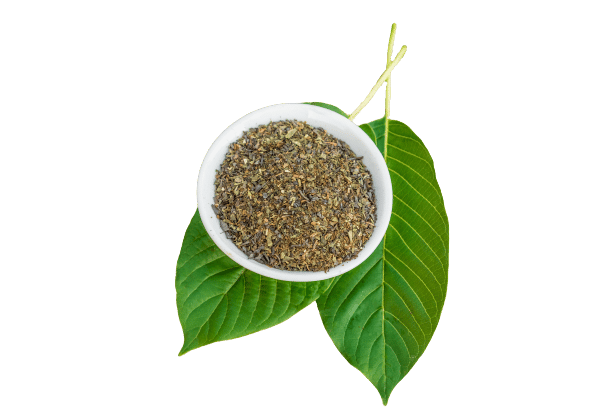
How to Use Kratom
You can take kratom in many ways. Recreational users often opt for the toss-and-wash method, which involves throwing a dose of powdered kratom into your mouth and chasing it down with liquid before the kratom has contact with your mouth.
Some of the more manageable options include drinking it as tea or taking it in capsule form. Kratom also comes in tinctures and extracts. Tinctures are probably the simplest way to take kratom, although they’re often disproportionately expensive.
Kratom’s Uses & Benefits
Kratom has many different uses and benefits, making it a powerful short-term medicine for acute problems. These various benefits separate it from matcha, which produces only a few immediate benefits yet provides many long-term health bonuses.
Here are some of the most popular uses of kratom.
Boost Energy
As mentioned, kratom is a stimulant. Low doses of certain strains, primarily white and green, produce more stimulation than others. High doses and red strain are more sedative.
Improve Focus & Concentration
Stimulating strains of kratom are also capable of producing focus and concentration. This makes them useful as study aids and can help improve motivation and productivity.
Effective Pain Relief
Kratom is an effective pain reliever due to those alkaloids that target the opioid system. This is also a large part of why kratom can be addictive.
Again, certain strains are more likely to produce these benefits than others. Energizing strains are less likely to provide pain relief; their stimulatory actions have more to do with dopamine and adrenaline than the opioid system.
For pain relief, look for sedating strains like red and yellow. Green vein kratom strains, which strike a fair balance between stimulation and sedation, also offer some pain relief.
Related: The Best Kratom Strains for Fibromyalgia.
Sedation & Relaxation
Kratom can also produce profound sedation, making it perfect for people who struggle to fall asleep at night. Avoid white and green strains when looking for relaxation; instead, choose red and yellow kratom.
Matcha 101
Matcha, also referred to as ceremonial green tea, is made from the same leaves as typical green tea. Green tea comes from the leaves of Camellia sinensis.
Matcha is the tea used in Japanese tea ceremonies. It provides clarity of mind as well as energy, stimulation, and focus.
Unlike conventional sources of caffeine, such as coffee, green tea provides stimulation without causing much of a jittery side effect. This is because of a compound known as L-theanine.
L-theanine is an amino acid that produces relaxation and reduces anxiety. Combined with caffeine, it allows for powerful stimulation without the “edge.”
Matcha bushes are covered and kept in the shade for as much as 30 days before harvest. This increases the amount of chlorophyll that the plant produces and the overall amino acid content.
Chlorophyll is the pigment that leads to the green color in trees and shrubs. More chlorophyll means brighter, deeper greens and explains why matcha powder is so vibrant.
Matcha leaves are steamed instead of dried, stems and veins are removed and then ground into a fine powder.

How to Use Matcha
People commonly drink matcha tea, but there are other ways of consuming it. You can simply swallow the powder, for example, or you can take it in capsule form. If you’re adventurous, you can use a matcha enema much like you would a coffee enema.
Matcha’s Uses & Benefits
Matcha has a whole host of benefits, but most emerge over time due to the compounded effects of a powerful antioxidant found in green tea, epigallocatechin(EGCG).
Except for its stimulating and focus-boosting properties, most of what matcha does occurs behind the scenes.
This makes matcha not unique in terms of the specific benefits it delivers but also in the way that it provides these benefits. Instead of being an immediate-acting herb, most of its health benefits require regular consumption.
So for matcha drinkers, who are most likely drinking the tea for its energy boost, these benefits are sort of like a bonus.
Here are some of matcha’s long-term health benefits:
Improved Energy
Matcha is similar to a strong green tea. Its caffeine content is close to that of a cup of coffee, so be careful what time of day you drink it. Too much matcha can leave you awake all night.
Improved Focus & Concentration
Matcha is an excellent herbal supplement for anybody hoping to focus and concentrate for hours on end. Unlike certain strains of kratom, it’s unlikely to fade off into relaxation towards the end.
Balanced Blood Sugar
Studies have revealed that green tea helps reduce blood sugar, making it a good beverage for anyone struggling with diabetes, primarily type 2 [1].
Weight Loss
Caffeine stimulates the central nervous system and boosts metabolism, increasing the rate at which you burn calories; stimulants also curb appetite. This makes matcha a valuable tool for weight loss [2].
Helps Fight Cancer
Green tea is full of antioxidants. Antioxidants, in general, help fight cancer, but the EPGC in green tea is proven to reduce the size of tumors [3].
Antioxidants fight cancer by preventing free radicals. Free radicals are haywire electrons. They create a chain reaction by destroying or damaging cells, leading to cancer development.
Liver Protection
Matcha can help with nonalcoholic fatty liver disease by reducing the level of liver enzymes [4]. The disease elevates these enzymes, causing fatigue, jaundice, abdominal pain, swelling, nausea, and vomiting.
Improved Cognitive Ability
Matcha works well as a nootropic — a substance that helps boost mental ability [5]. In particular, matcha increases memory, improves problem-solving skills, and increases verbal fluidity.
Improved Heart Health
Matcha reduces LDL cholesterol levels [6] and, despite acting as a stimulant, lowers blood pressure when used regularly [7].
The amount of bad cholesterol or LDL cholesterol in your blood is one leading indicator of cardiovascular health.
So, Which One is Right for Me?
Despite their similar appearance, Matcha and kratom are two very different herbal supplements.
Kratom is powerful medicine and should be used symptomatically; use kratom to help manage unwanted symptoms like pain and anxiety. It’s not a great supplement to use every day, and certainly not multiple times every day.
On the other hand, matcha is much more forgiving for somebody looking for a daily pick-me-up. It’s the better choice if you’re interested in improving your overall health, but it does not help fight pain or anxiety.
Recreationally, kratom is the better option. Matcha provides a slight boost, while kratom produces a sense of euphoria.
Unfortunately, this also adds to the addictive potential of kratom. People start to crave the feel-good benefits of the plant and begin to seek it out of compulsion rather than for its health benefits.
Both herbs have their place. Ultimately, it comes down to what you’re looking for. Kratom is a better medicinal plant for anybody hoping to manage pain, anxiety, or insomnia.
If you want a mild daily stimulant, matcha is a better option.
- Tsuneki, H., Ishizuka, M., Terasawa, M., Wu, J. B., Sasaoka, T., & Kimura, I. (2004). Effect of green tea on blood glucose levels and serum proteomic patterns in diabetic (db/db) mice and on glucose metabolism in healthy humans. BMC pharmacology, 4(1), 1-10.
- Jurgens, T., & Whelan, A. M. (2014). Can green tea preparations help with weight loss?. Canadian Pharmacists Journal, 147(3), 159.
- Bozorgi, A., Khazaei, S., Khademi, A., & Khazaei, M. (2020). Natural and herbal compounds targeting breast cancer, a review based on cancer stem cells. Iranian Journal of Basic Medical Sciences, 23(8), 970.
- Pezeshki, A., Safi, S., Feizi, A., Askari, G., & Karami, F. (2016). The effect of green tea extract supplementation on liver enzymes in patients with nonalcoholic fatty liver disease. International journal of preventive medicine, 7.
- Sakurai, K., Shen, C., Ezaki, Y., Inamura, N., Fukushima, Y., Masuoka, N., & Hisatsune, T. (2020). Effects of Matcha Green Tea Powder on Cognitive Functions of Community-Dwelling Elderly Individuals. Nutrients, 12(12), 3639.
- Zheng, X. X., Xu, Y. L., Li, S. H., Liu, X. X., Hui, R., & Huang, X. H. (2011). Green tea intake lowers fasting serum total and LDL cholesterol in adults: a meta-analysis of 14 randomized controlled trials. The American journal of clinical nutrition, 94(2), 601-610.
- Liu, G., Mi, X. N., Zheng, X. X., Xu, Y. L., Lu, J., & Huang, X. H. (2014). Effects of tea intake on blood pressure: a meta-analysis of randomised controlled trials. British Journal of Nutrition, 112(7), 1043-1054.

